| Recent Featured Videos and Articles | Eastern “Orthodoxy” Refuted | How To Avoid Sin | The Antichrist Identified! | What Fake Christians Get Wrong About Ephesians | Why So Many Can't Believe | “Magicians” Prove A Spiritual World Exists | Amazing Evidence For God | News Links |
| Vatican II “Catholic” Church Exposed | Steps To Convert | Outside The Church There Is No Salvation | E-Exchanges | The Holy Rosary | Padre Pio | Traditional Catholic Issues And Groups | Help Save Souls: Donate |  |

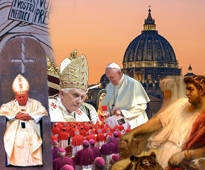
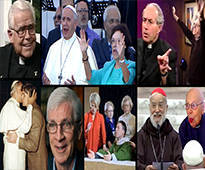
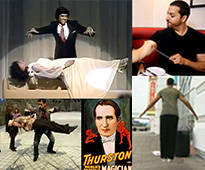


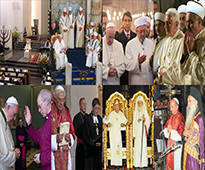


 " />
" /> " />
" /> " />
" /> " />
" />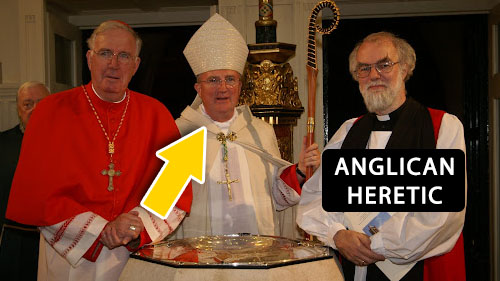 " />
" />




Pope St. Leo The Great Ends The Debate
We have seen how Tradition doesn’t teach baptism of desire and how the infallible teaching of the Church on the Sacrament of Baptism and John 3:5 excludes it. And we have seen how this error was perpetuated in the middle ages through flawed passages in the fallible texts of Churchmen. I will now discuss perhaps the most interesting pronouncement on this issue, the dogmatic letter of Pope St. Leo the Great to Flavian, which excludes the exact concept of baptism of desire and baptism of blood.
Before I get into the tremendous significance of this pronouncement, I will give a little background on this dogmatic letter. This is Pope St. Leo the Great’s famous dogmatic letter to Flavian, originally written in 449, and later accepted by the Council of Chalcedon – the fourth general council of the Church – in 451 (quoted in Decrees of the Ecumenical Councils, Georgetown Press, Vol. 1, pp. 77-82). It is one of the most important documents in the history of the Church. This is the famous letter which, when read aloud at the dogmatic Council of Chalcedon, caused all of the fathers of the council (more than 600) to rise to their feet and proclaim: “This is the faith of the Fathers, the faith of the apostles; Peter has spoken through the mouth of Leo.” The very letter in itself embodies the term ex cathedra (speaking from the Chair of Peter), as proven by the reaction of the fathers at Chalcedon. This dogmatic letter of Pope Leo was accepted by the Council of Chalcedon in its definition of Faith, which was approved authoritatively by Pope Leo himself.
And if that were not sufficient to prove that Pope Leo’s letter is without question infallible and dogmatic, consider the fact that it was also approved by Pope Vigilius at the Second Council of Constantinople (553)[2] and by the dogmatic Third Council of Constantinople (680-681).[3] It was also confirmed infallibly by a number of other popes, including: Pope St. Gelasius, 495,[4] Pope Pelagius II, 553,[5] and Pope Benedict XIV, nuper ad nos, 1743.[6]
Because of the tremendous significance of Pope Leo’s letter to the topic at hand, I will quote an extract from Pope St. Gelasius which shows how no one can contradict, in the slightest way, this dogmatic epistle of Pope St. Leo to Flavian.
Here we have Pope St. Gelasius speaking ex cathedra to condemn anyone who would depart, even in regard to one iota, from the text of Pope Leo’s dogmatic epistle to Flavian.
Now, in the section of Pope Leo’s dogmatic letter quoted above, he is dealing with Sanctification by the Spirit. “Sanctification by the Spirit” is the term for Justification from the state of sin. Justification is the state of grace. No one can get to heaven without Sanctification by the Spirit [Justification], as everyone professing to be Catholic admits. Pope St. Leo affirms, on the authority of the great apostles Sts. Peter and John, that this Sanctification by the Spirit is effected by the sprinkling of Christ’s Blood. It is only by receiving the Blood of Redemption, he proves, that one can be changed from the state of Adam (original sin) to the state of grace (justification/sanctification). It is only by this Blood that Sanctification by the Spirit works. This dogma was also defined by the Council of Trent.
It is a divinely revealed truth that no one can be freed from the state of sin and sanctified without the application of the Blood of Redemption to him. Of this no Catholic can doubt.
Baptism of desire/blood advocates – and this would also include the St. Benedict Center, since they also believe in justification by desire – argue that the Blood of Redemption, which effects the Sanctification by the Spirit, is applied to the soul by the desire for baptism or by his martyrdom, without water baptism. Remember that: baptism of desire/blood advocates argue that the Blood of Redemption, which effects Sanctification by the Spirit, is applied to the soul without water baptism. But this is exactly the opposite of what Pope Leo the Great defines dogmatically! I will quote the crucial portions of his statement again:
Pope St. Leo defines that in Sanctification, the Spirit of Sanctification and the Blood of Redemption cannot be separated from the water of baptism! Thus, there can be no Justification by the Spirit and the Blood without the Sacrament of Baptism.
This infallibly excludes the very concept of baptism of desire and baptism of blood, which is that sanctification by the Spirit and the Blood without water is possible.
In light of this dogmatic letter, as well as the other facts already brought forward, baptism of desire and baptism of blood cannot be held; for these theories separate the Spirit and the Blood from the water in sanctification.
And lest someone tries to find fault with this infallible definition by arguing that the Blessed Virgin Mary is an exception to it, it should be recognized that Pope St. Leo is defining on sanctification/justification from the state of sin.
The Blessed Virgin Mary had no sin. She was conceived already in a state of perfect sanctification. Since Pope Leo is defining on sanctification/justification from sin, his definition does not apply in any way to her.
Therefore, there can be no Justification of a sinner without water baptism (de fide). There can be no application to a sinner of Christ’s Redemptive Blood without water baptism (de fide). There can be no salvation without water baptism (de fide).
To further prove the point that this dogmatic pronouncement specifically eliminates the entire theory of baptism of desire, notice how St. Thomas Aquinas (in teaching baptism of desire) says exactly the opposite of what Pope St. Leo the Great defined.
St. Thomas says that baptism of desire gives one sanctification without the water of Baptism. Pope St. Leo the Great says dogmatically and infallibly that one cannot have sanctification without the water of baptism! A Catholic must accept Pope St. Leo the Great’s teaching.
The significance of Pope St. Leo’s pronouncement is extraordinary. It naturally crushes any idea of salvation for the supposedly “invincibly ignorant.” These souls cannot be sanctified and cleansed by the Blood of Christ without receiving the saving waters of baptism, which God will bring to all of good will.
The dogma that the Blood of Christ is applied to a sinner in the Sacrament of Baptism was defined by the Council of Trent; however, the definition is not as specific as Pope Leo’s. The difference is that, whereas Trent’s definition on the Blood of Christ sets forth the principle that the Blood of Christ is applied to a sinner in the Sacrament of Baptism, Pope Leo’s definition confirms that this means that the Blood of Christ can only be applied to a sinner by the Sacrament of Baptism.
Pope St. Leo’s pronouncement also radically confirms the Church’s consistent understanding of the words of Jesus Christ in John 3:5 in their absolutely literal sense: Unless a man is born again of water and the Spirit, he cannot enter into the kingdom of God.
One can see the harmony of Pope St. Leo the Great’s dogmatic pronouncement with all of these others: there is no salvation without water and the Spirit because the Blood of Christ – without which no one is justified – is itself inseparable from the water and the Spirit.
Those who comprehend this pronouncement from Pope St. Leo must reject any belief in the theories of baptism of desire and blood. They must admit that the theologians who believed in baptism of desire and blood were mistaken. They must cease believing and teaching that Sanctification by the Spirit comes without the water of baptism. Those who refuse to do this are obstinately contradicting the teaching of the Church. To obstinately contradict the teaching of the Church is to fall into heresy. To fall into heresy without repentance is to lose one’s salvation.
Some may wonder why some saints and theologians taught baptism of desire and blood even after the time of Pope Leo’s pronouncement. The answer is simple: They were unaware of Pope Leo’s definitive pronouncement in this regard; they were erring in good faith; they were fallible human beings; they were not aware that their position was contrary to this infallible teaching of the Catholic Church.
But once one recognizes that this position on baptism of desire and blood is contrary to the infallible teaching of the Catholic Church – as a careful consideration of Pope Leo’s pronouncement proves – one must change his position if he wants to remain Catholic and save his soul. St. Peter has spoken through the mouth of Leo and confirmed for us that the Spirit of Sanctification and the Blood of redemption cannot be separated from their link with water baptism, so we must align our position with this or else we don’t have the faith of Peter.
[1] Decrees of the Ecumenical Councils, Vol. 1, p. 81.
[2] Decrees of the Ecumenical Councils, Vol. 1, p. 112.
[3] Decrees of the Ecumenical Councils, Vol. 1, p. 127.
[4] Denzinger 165.
[5] Denzinger 246.
[6] Denzinger 1463.
[7] Denzinger 165.
[8] Denzinger 790.
[9] Denzinger 795.
[10] Decrees of the Ecumenical Councils, Vol. 1, p. 81.
[11] Decrees of the Ecumenical Councils, Vol. 1, p. 81.
[12] Denzinger 790.
[13] Denzinger 696; Decrees of the Ecumenical Councils, Vol. 1, p. 542.
[14] Denzinger 791; Decrees of the Ecumenical Councils, Vol. 2, pp. 666-667.
[15] Denzinger 858.
[16] Denzinger 861; Decrees of the Ecumenical Councils, Vol. 2, p. 685.
Sign up for our free e-mail list to see future vaticancatholic.com videos and articles.
Recent Content
^